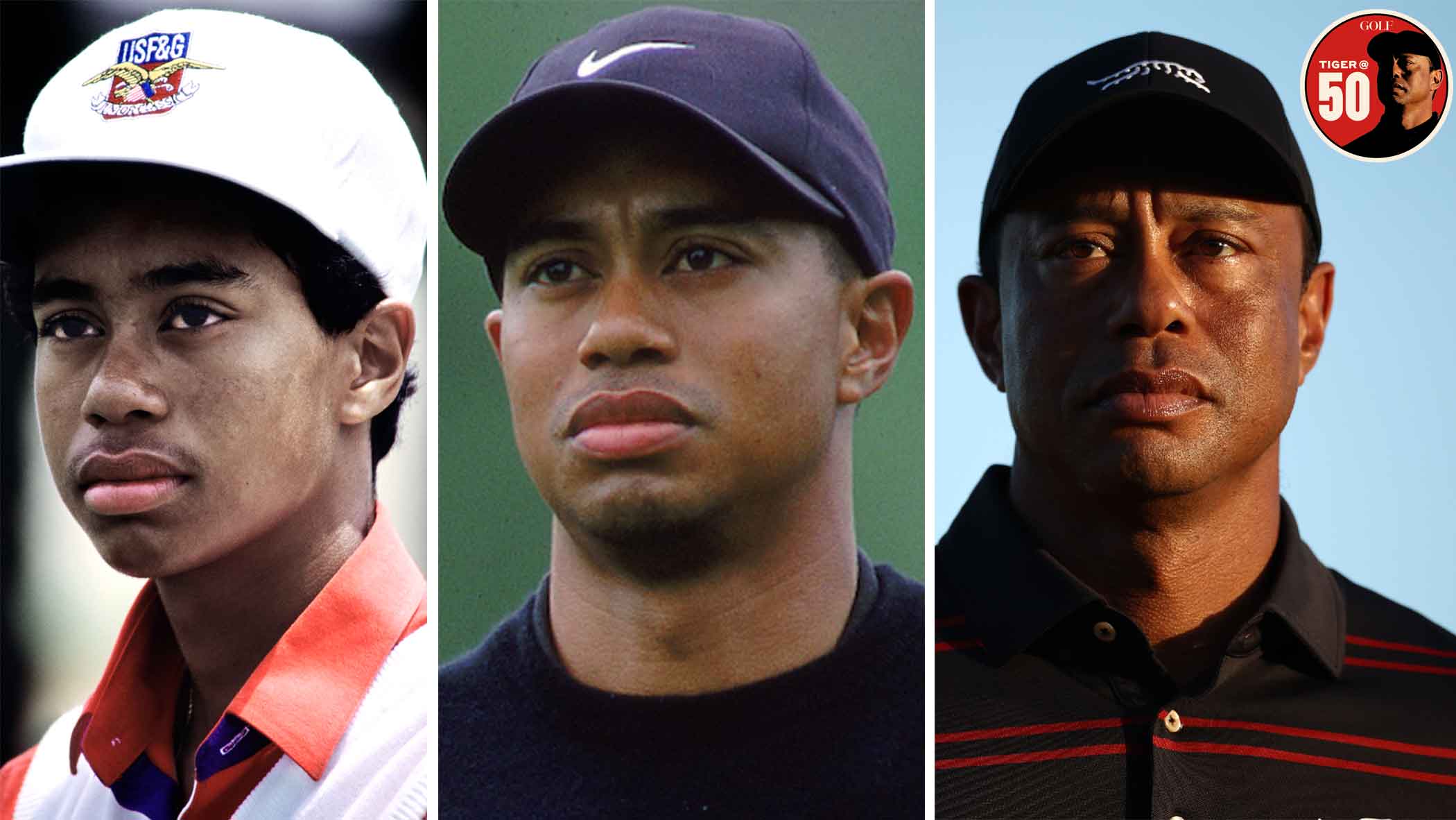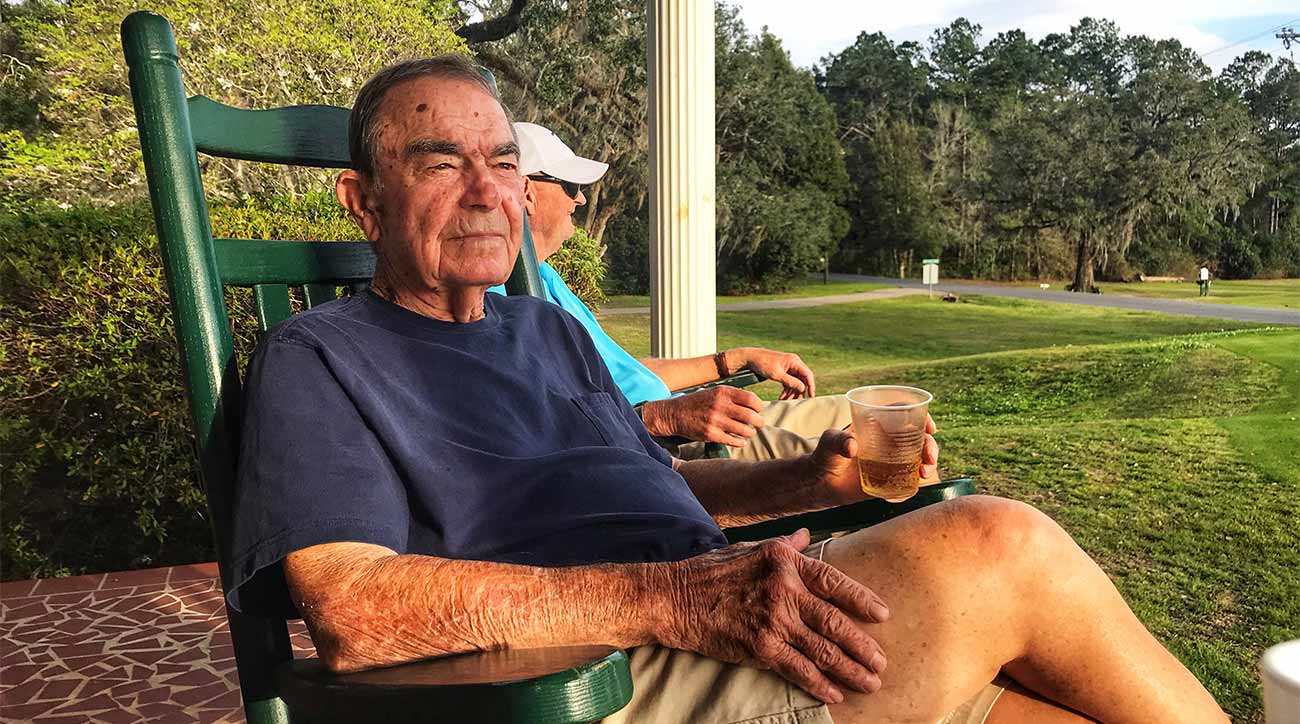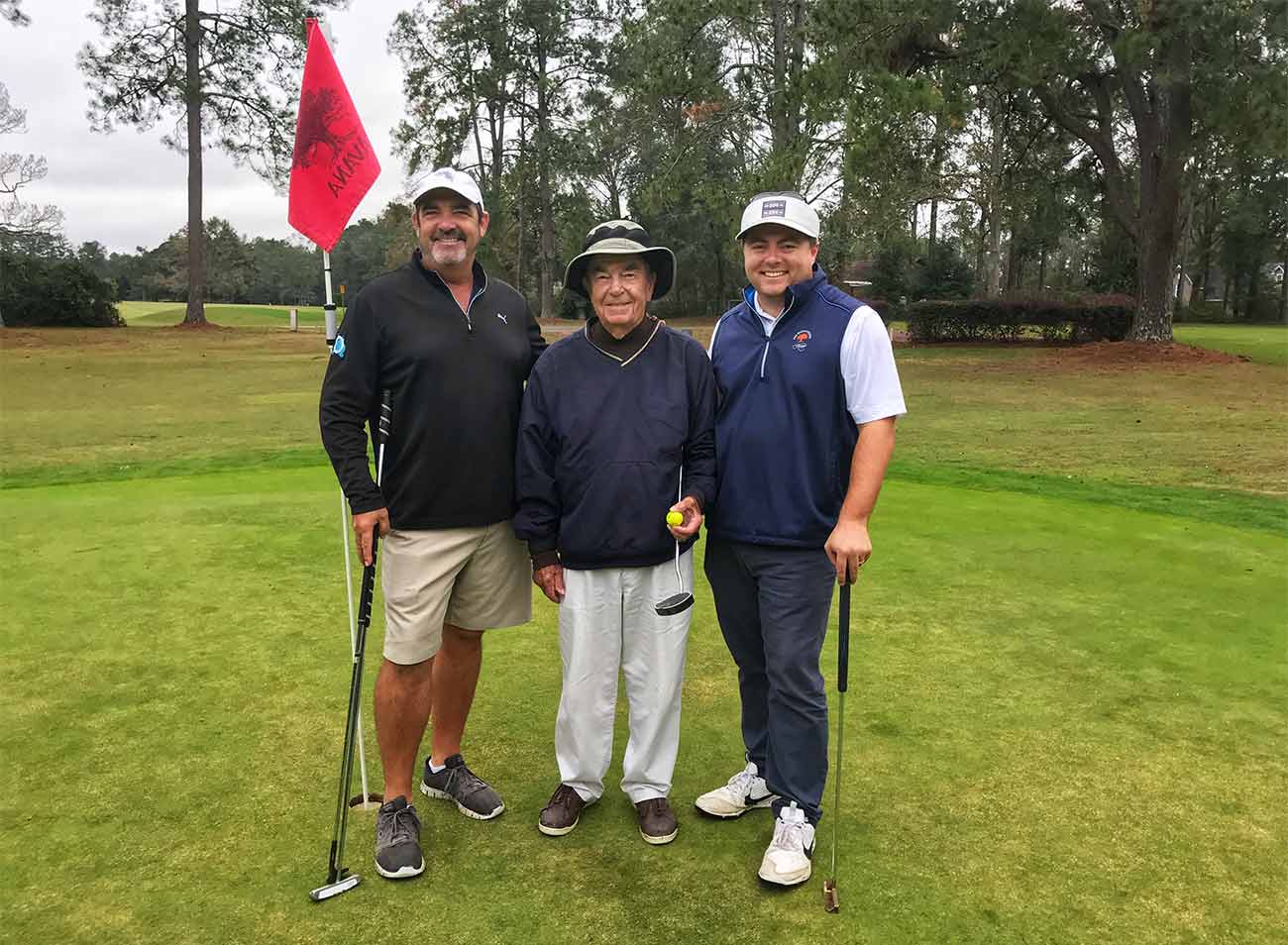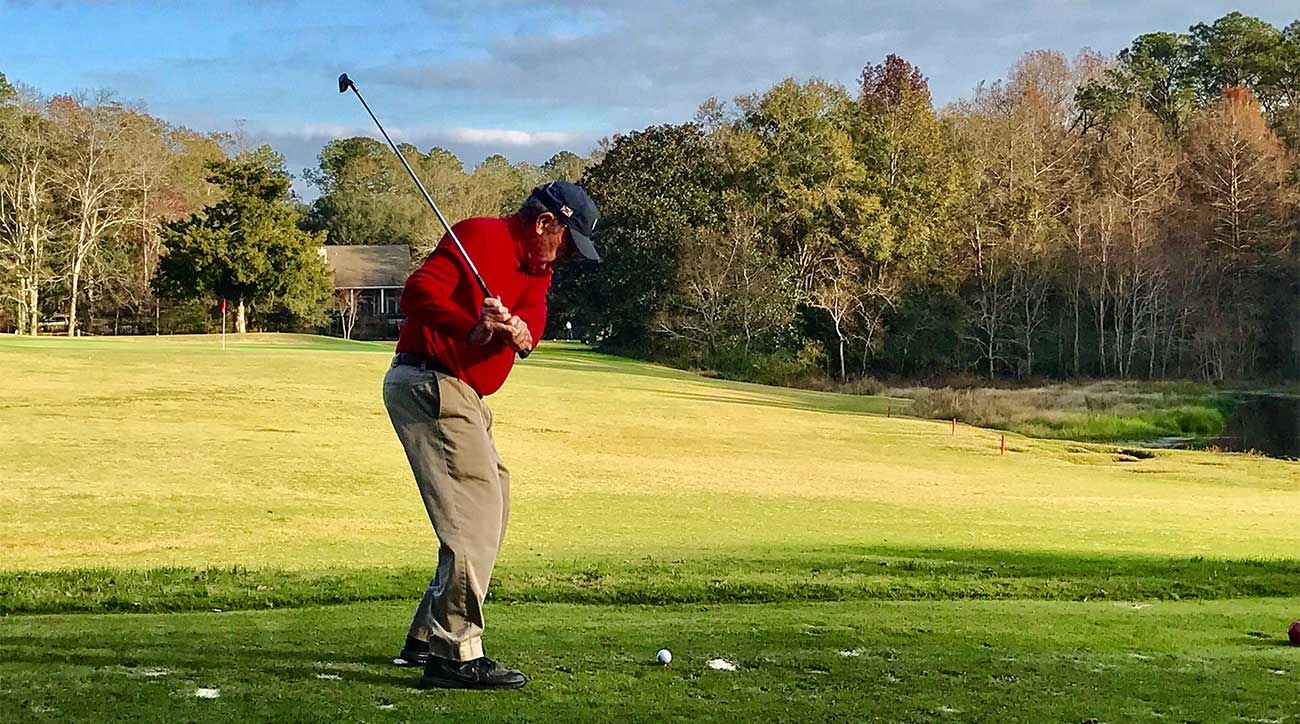 Tiger Woods has lived his first two acts. His third act is a work in progress
Tiger Woods has lived his first two acts. His third act is a work in progress
The most important lessons I’ve learned about golf — and life — have come from my Gramps

This is the latest submission to Knockdown Presents, in which we’re giving a platform to fresh new voices from around the golf world. For more on this venture, including how to submit your own stories, click here.
One of my favorite things about playing golf with my grandfather is watching him shoot his age, and I like to think he’s one of the few who do it regularly at 85 years old. Ed Bates, or Gramps, as I call him, is a retired club professional who plays four days a week at Havana Golf & Country Club (HGCC) — a nine-hole golf community tucked away in a sleepy town in rural North Florida. Gramps spent three decades behind the counter at HGCC and is a bit of a local legend there. Despite his advancing age, Gramps can still play with some serious authority.
Gramps taught me the game of golf, and it’s the most cherished gift he has ever given me. We must have spent thousands of hours together on the course, especially when considering he coached my high school golf team, and among the many lessons he taught me through the years there is one he always comes back to every time we play. “Good golf is monotonous,” he tells me. To translate his euphemism, what he means is that to play well you must play a consistent game that is easily repeatable. He reflects that lesson not only in his golf game but in his life as well.
A regular routine
Most folks don’t hang out at the place they retired from, but that’s just one of the great quirks of my grandfather’s weekly golf routine. Gramps is the ultimate creature of habit. He begins each day with a breakfast of oatmeal, grapefruit, or perhaps some slightly burnt toast. After a dose of coffee, he works his crossword puzzle in the solitude of his chambers. Then, after putting on his favorite sweats, he takes a two-mile bike ride around town where he waves at friends and mumbles profanities at drivers who disobey the rules of the road. He still rides the same bike I used to sit in the basket of when I was a toddler. To call him consistent would be an understatement.
After his morning activities are complete, Gramps begins the maneuvers associated with preparing for his favorite pastime. Shave, shower and select an outfit for the golf course. He only keeps a handful of shirts in the rotation these days so not to waste time over it. My grandmother gave up on introducing new items to his collection years ago. Let’s just say he likes what he likes.

The drive from his house to the country club is less than a mile. That is why the truck he bought himself after retirement 20 years ago only has 30,000 miles on it. Gramps can basically coast from his house over the train tracks and into the driveway of the club. Some of his routine may seem antiquated but as he likes to remind the world, “if it works, keep working it.”
Gramps’ local gangsome plays every Tuesday, Thursday, Saturday and Sunday. The tee time is 1 p.m. and the faces around the clubhouse haven’t varied much over the past few decades. They all start to congregate just after noon and by the time the teams are made up everyone is antsy to begin.
When I venture over to Havana for a round with Gramps, I always try to get there a few minutes early. Watching his warm up routine is one of my favorite parts of the experience. After arriving at the club and trading a few hellos, Gramps goes into the bag room to retrieve his clubs. As he barrels through the doorway with his staff bag in-hand — wearing a bucket hat, sun sleeves, and a big smile — he scopes out a cart and climbs in. The old master sits ready to play.
Holding on to relics
Gramps’ golf bag and the clubs that reside in it are a bit of their own story. His bag was a retirement present from my uncle who spent several years on tour. The hulking staff bag is a tour model from the turn of the century that my uncle had made with Gramps’ name on it. At the time, my uncle was playing on tour and his longtime sponsors at Callaway Golf were kind enough to make a special bag for Gramps. It was a humorous gift because Gramps had gone some 20 years using hand-me-down tour bags with my uncle’s name on them.
You might think that such an old bag would clash with today’s modern equipment, but Gramps has used the same clubs for over two decades. His sticks are straight out of the early 90s and look like period pieces from the Tin Cup movie set. He plays with a full set of original Callaway Big Bertha irons that my uncle used during his Nike tour days. Incredibly, he swings those irons with extra stiff True Temper x100 steel shafts. Despite our efforts to upgrade these clubs over the years he continues to insist on keeping them. He is firmly in the camp of the “it’s the archer, not the arrow” philosophy and likes to tell me that “the club will only work as well as you do.”
ADVERTISEMENT
When we played recently, I tried to offer Gramps a low compression golf ball, but he shrugged at me and said, “it really doesn’t matter so long as you hit it good.” He keeps an assortment of balls in his bag that look like they came from the local driving range. Gramps swings the same whether he’s looking at a scuffed up Top Flight, an old yellow Srixon, or a ProV1 he fished out of the pond. I can hear him saying, “it’s round isn’t it?” as he pulls another ball from muck. To him the only thing that matters is making a good turn.
But those turns don’t come so easy anymore thanks to a back injury from 40 years ago. Even with back problems and a full-time club job he damn near made it through to the U.S. Senior Open once. Gramps’ golf game is all home grown and, had life dealt him a few different cards, he may have seen some time on tour himself.
One last pupil
An accountant by trade, Gramps saw an opportunity to find employment in the game he loved when the head professional job opened up not long after Havana Golf & Country Club was founded. For 30 years, he treated the club and course as if it were his own. He was always the first person to arrive each day and the last one to leave. He worked well over 300 days per year and spent many of them teaching the game to his neighbors and their children. Along the way, Gramps made a difference in many lives by sharing the gift of golf with others, including me.
To this day, Gramps is the only teacher I’ve ever had. His old school lessons and catchy sayings about the game are usually just what I need to find the center of the club face. He keeps his lessons simple and his instruction succinct. Gramps still believes the best training aid is a heavy broom and that the most important attribute a player can have is a love for being on the golf course. Those teachings are ingrained in my game, and even when he’s not around I can hear him showing me the way.

Gramps has imprinted certain thoughts into my golfing mind that I’ll never be able to shake. His disdain for the dominant hand is among his greatest hits. “Your right hand is a menace, don’t let him in the swing.” He also has theories on putting, which as he ages he is increasingly inclined to try from everywhere. “Roll the ball like it’s a coin on edge” is good advice for the stroke and he always likes to talk about the physics of “aiming to the apex and putt for the last roll to drop in.”
For many years I would come back to play with Gramps to get a few tips, but nowadays I go to see him work with the only pupil he has left — himself. When you turn 85, the mind starts to slip and your body doesn’t behave as it should. For example, Gramps has to constantly remind himself to turn his shoulders. It is easy to fall into a habit of reaching for your swing when you lose flexibility. I watch him search out that motion each time we play. When he finds it, his swing is just as sweet and smooth as ever, but even for an old pro like him it’s tough to keep it together. He frequently narrates his struggle to me, saying “I didn’t use to have to think when I played, but now I do and thinking is bad for golf.”
Good golf is monotonous
When Gramps talks about the monotony of good golf, he’s really talking about discipline. To him, golf is about making the most of what you have. He tells me, “You don’t need to swing like anyone else, just you.” Nowadays he has to remind himself of that.
When he was young, Gramps could easily shape shots and chase birdies, and now at 85 years old his game is more about preserving bogeys and finding ways to make the occasional par. His consistent approach to how he plays and lives his life is based on a belief that everyday yields an opportunity to do your best. He has taught that strategy for decades and now as he is coming down the final fairways of life, he is still teaching himself how to do it.
When Gramps shoots his age there isn’t much celebration. Usually he and I are the only ones paying attention to that. I know to look for the sly grin across his face when the final putt drops to give him his number, and I can see disappointment when it doesn’t. No matter the outcome he doesn’t spend much time on it and neither do I. The most important part is coming back the next time — another valuable lesson he’s taught me.
Gramps’ lessons are the foundation of my golf game, and long after he’s gone, I will always feel connected to him when I’m out on the course with a club in hand. As I grow older, becoming a husband, father, and professional, his lessons from the course have also helped me to be a better man. Over the years, his refrain on life has proven just as important as his swing tips, “A loving wife, a happy child, and a hard day’s work are all you really need.” With his lessons on golf and life in mind, if I can keep my head down and just keep swinging, I’ll probably turn out just fine. Much like his beliefs on golf, Gramps sees monotony as the key to a well-lived life. In spite of the many gifts he has given me through our favorite game, that is perhaps the greatest gift of them all.
Jay Revell is a golf writer and public affairs professional living and working in Tallahassee, Fla., where he is a member and historian at Capital City Country Club. You can view his personal website here.
ADVERTISEMENT




